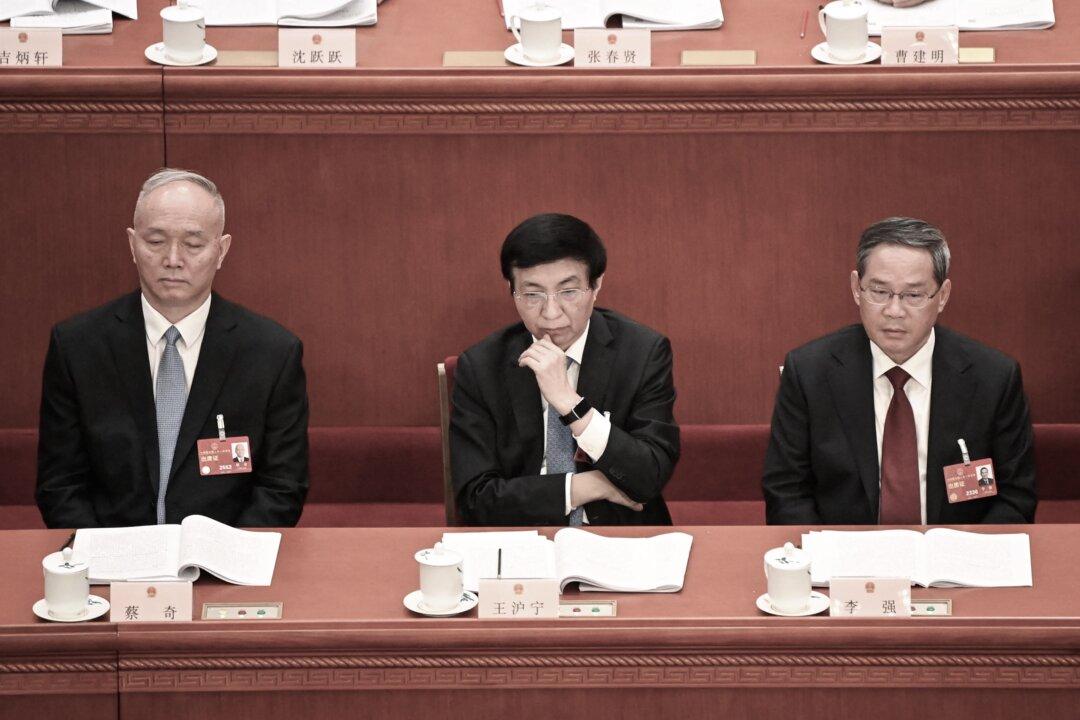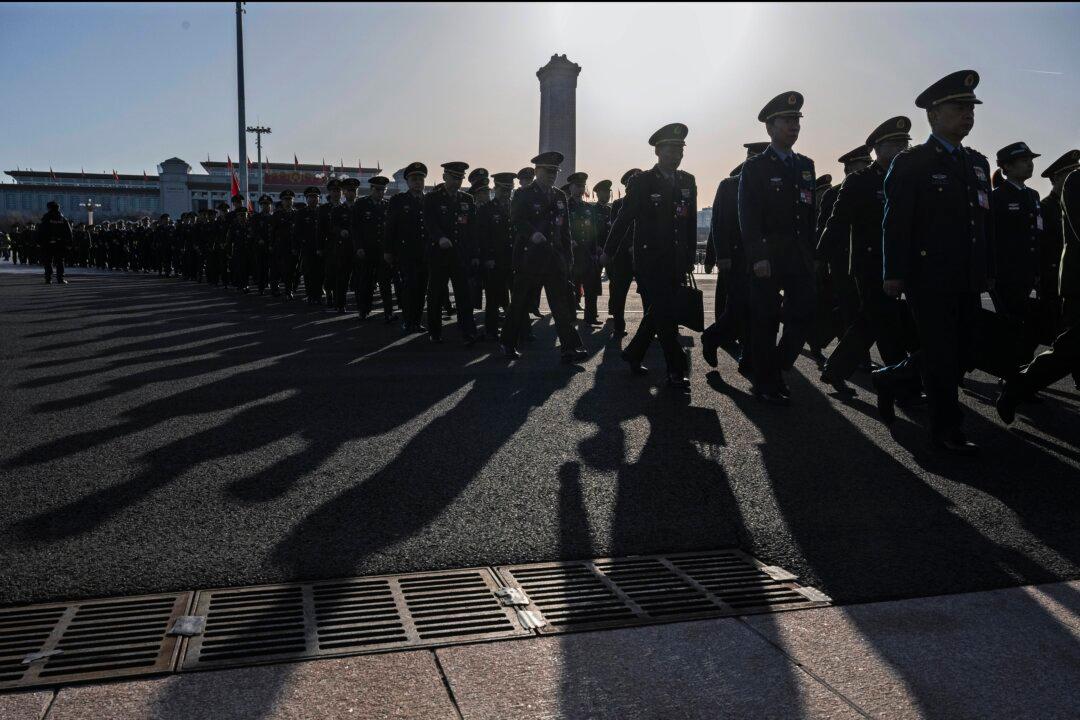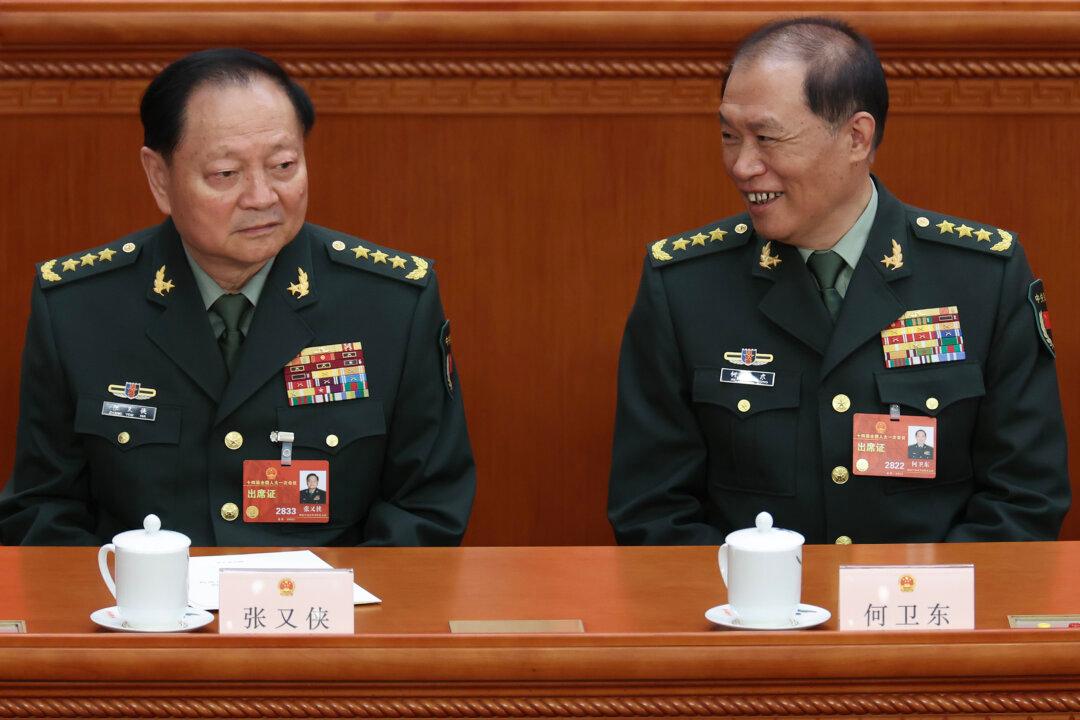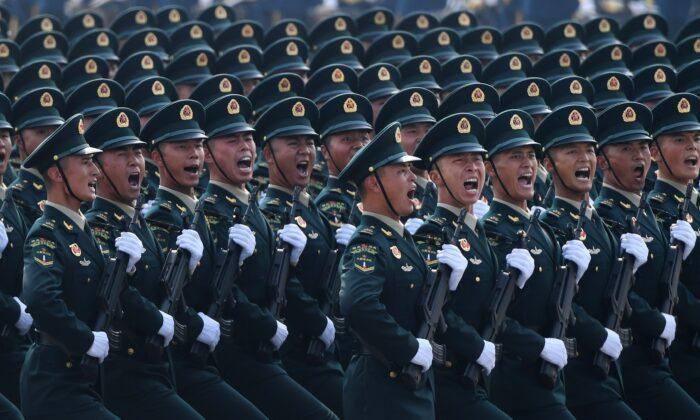Thirty-one provinces and municipalities in China were reported to be dealing with COVID-19 outbreaks, with some cities imposing tightened epidemic prevention and control measures. The new round of lockdowns is disrupting Premier Li Keqiang’s intention to rescue the economy, say several political analysts.
According to Chinese official media, 31 of the country’s 34 provincial administrative regions and Xinjiang Construction Corps have confirmed new COVID-19 cases. Many local authorities have reintroduced strict control measures such as closing entertainment venues and suspending dine-in meals.
Chengdu, the capital of Sichuan province, announced an extension of lockdown following power restrictions. Chengdu authorities announced on Sept. 1 that from 6 pm that day, all residents were required to “stay at home unless necessary,” and only one person per household could go out to buy daily supplies if that person could present a negative nucleic acid test certificate within 24 hours. From Sept. 1 to 4, nucleic acid testing was conducted throughout the city.

Chengdu authorities did not give a specific date for the end of the lockdown. The megacity of 21 million people in southwest China came to a halt after the announcement. As of this report’s publishing on Sept. 9, Chengdu was still under an indefinite lockdown.
‘County-Wide Silent Management’
Zaoqiang County in Hengshui City, Hebei Province implemented so-called “county-wide silent management” measures from Aug. 31 to Sept. 4. Residents were asked not to go out during this period unless necessary. Strict traffic controls were carried out on all roads in urban areas. With the exception of supermarkets, pharmacies, and medical institutions, all other places of business were suspended. Schools, kindergartens, and off-campus training institutions stopped offline teaching.Dalian city in Liaoning Province issued an announcement that from Aug. 30 to Sept. 3, all residents in the main urban area were not be allowed to leave their homes unless necessary; primary and middle school students across the city postponed their return to school in the fall; staff in enterprises and public institutions worked from home; buses, subways, long-distance buses, and charter buses in the main urban area were temporarily suspended.

Chinese American current affairs commentator Chen Pokong said that China’s “Zero-COVID” and lockdown policies have reached another peak, which is a shock, or even a counterweight to Li Keqiang’s efforts to save China’s economy.
“Li Keqiang proposed 33 measures in six areas to save the economy and improve people’s livelihood at the 100,000-official meeting in May, but he did not mention anything about ‘Zero-COVID’ and lockdown,” Chen said in his YouTube program on Sept. 4.
“Although the Chinese Communist Party has held the Beidaihe meeting and the Politburo meeting and has finalized the date of the 20th National Congress, the fighting between Xi Jinping and Li Keqiang became more heated. It now appears that the two are engaged in an intensifying fight, not ending with the Beidaihe meeting or the Politburo meeting.”

‘No Substantive Policies Will be Introduced’
Ruan Jianhong, the People’s Bank of China’s (PBOC) Statistics and Analysis Department, said at the China International Finance Annual Forum 2022 on Sept. 2 that China has not implemented an overstimulating monetary policy since the pandemic.“Currently, the rise in consumer prices is mild, providing good conditions for monetary policy adjustment,” Ruan said.
She also said that the PBOC will make the yuan more flexible and maintain a reasonable level of liquidity.
Mike Sun, a senior China investment strategist, made an analysis of Ruan’s statement for The Epoch Times on Sept. 4.
“Li Keqiang has proposed many measures to save the economy. He has gone out of his way to send inspection teams to inspect the implementation by local governments,” Sun said.
“What does it mean? It means that the local governments simply do not obey him. The central bank spokesman [Ruan Jianhong]’s speech is very representative: she wants to leave room for the latter period, while Li Keqiang’s view is to implement whatever effective policies as soon as possible. He is eager to play all the cards in his hand quickly.”
“There are still three months left before the end of the year. The time is actually very tight. Even if the stimulus policies are implemented now, I don’t see how good it will be at the end of the year,” he said.
“It’s already too late from the economic point of view. What the central bank spokesman implied was that ‘I do not know who will take over from you, Li Keqiang. The new leadership has not come out yet. I cannot introduce policies according to the requests of you, Li Keqiang, because I must listen to the new leadership.’”

No action will be taken until the CCP’s 20th National Congress is held, the top officials are confirmed, and low-level officials know who their future leaders are, according to Sun.
“So they just make a perfunctory effort with the present government, with Premier Li Keqiang. It’s unlikely that there will be any major moves now. No substantive policies will be introduced before the 20th National Congress,” he said.
Xi and Li at Odds
With Xi Jinping’s demand that his “Zero-COVID” policy be implemented nationwide, China’s economy is on a sharp downturn. Xi and Li have long been at odds over epidemic prevention and control policies and economic issues.On July 7, Li convened a meeting with top officials from the authorities of Shanghai, Jiangsu, Zhejiang, Guangdong, and Fujian provinces to analyze the economic situation.
Li told the meeting that China’s economy has gone through a very unusual process this year, and the current economic recovery is “very difficult.”
“The foundation for recovery is not solid, and we need to make strenuous efforts to stabilize the economy,” he said.

The five provinces and cities along the southeast coast account for over a third of China’s economic volume and nearly 40 percent of China’s fiscal revenue, making huge contributions to the central government’s finances, said the premier.
He called on the provinces and cities to “stabilize the economy” and “further open up the blockages in the industrial and supply chains” so to get the economy back on track as soon as possible.
Li added that developed coastal areas have become more integrated into the world economy, with the Yangtze River Delta and Pearl River Delta accounting for nearly 60 percent of China’s imports and exports. He said ports and other external hubs should be improved to stabilize foreign trade and foreign investment.
However, during a visit to Wuhan on June 29, Xi again stressed adhering to the “dynamic Zero-COVID” policy, saying that in order to implement the policy, “[we'd] rather affect economic development temporarily.“ He also said that considering the overall situation, ”this preventive measure is the most economical and effective.”

On May 25, Li convened an emergency meeting with over 100,000 CCP officials and stressed the need to “stabilize the economy.” Li made no mention of the “dynamic Zero-COVID” policy at the meeting, openly acknowledging the danger of China’s economy slipping out of kilter.
On May 23, Li acknowledged the widening downside risks to China’s economy at the executive meeting of the State Council and deployed 33 measures to stabilize the economy.
Infighting at the Top
Lu Tianming, a U.S.-based commentator on Chinese politics, told The Epoch Times that infighting among top echelons of the CCP has always been fierce, each with their own factions and supporters.Lower-level officials also behave in various ways, Lu said.
“Under the CCP system, it’s hard for anyone to do anything beneficial for the country and the people,” he said.
“It’s hard for Li Keqiang now. There are people who support him, who oppose him, and many officials who sit on the fence. A lot of things are messed up in the tussling among these officials,” he said.
“Restricted by the CCP system, even top officials can’t guarantee success in everything they want to do. [Even if] Li Keqiang wants to save the economy, he has no way to do it.”





